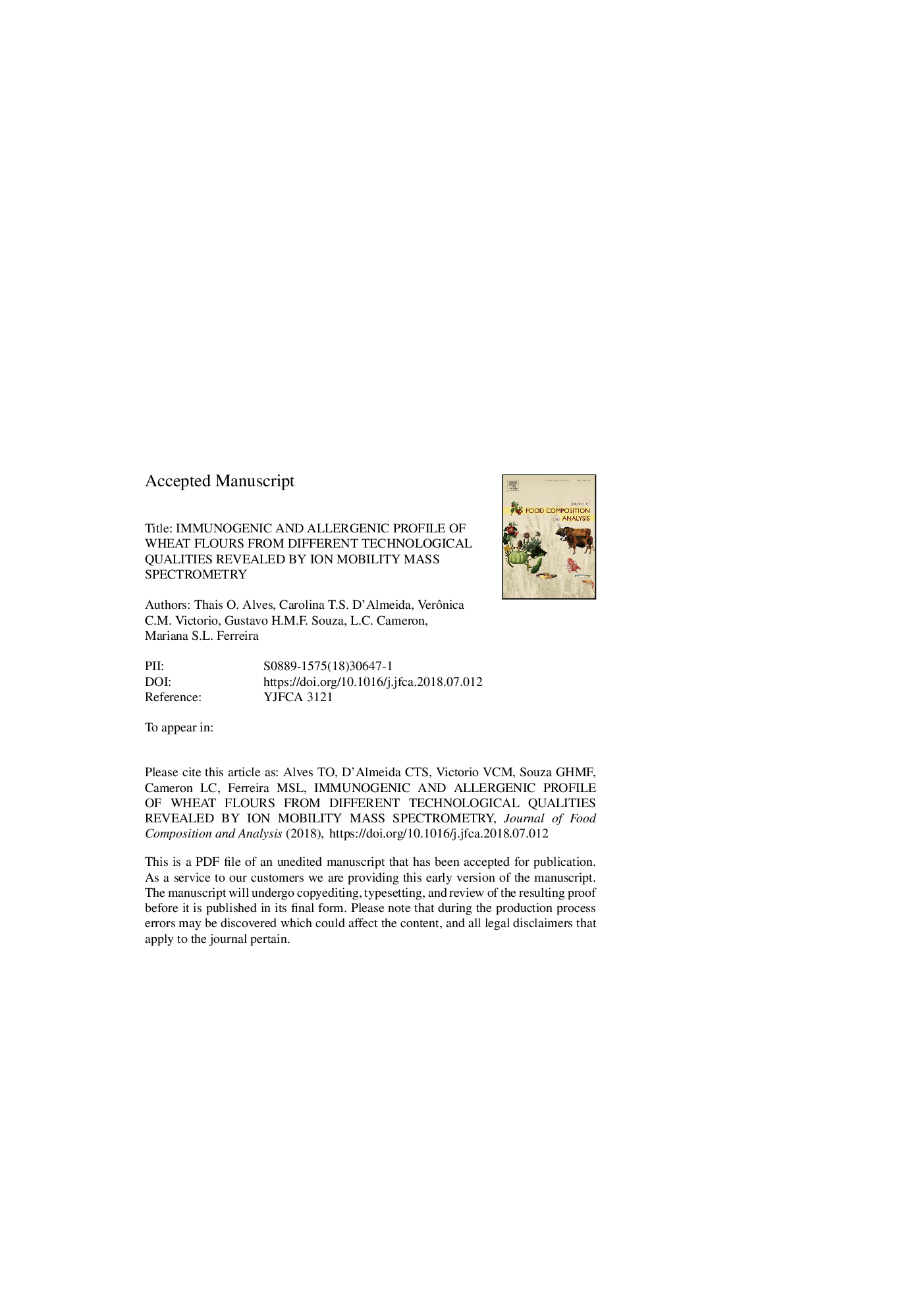| Article ID | Journal | Published Year | Pages | File Type |
|---|---|---|---|---|
| 7619506 | Journal of Food Composition and Analysis | 2018 | 39 Pages |
Abstract
A two-step extraction of soluble (AG) and gluten (GLU) proteins was performed on nine common wheat flours of different technological qualities, low (LW), medium (MD), and superior (SP). The immunogenic and allergenic peptides were identified and relatively quantified by a non-targeted multiplexed MS-MS method that used a Triticum aestivum database (UniProt) and ProPepperâ¢. Collectively, 3603 and 91,609 peptides were identified, and, after clustering and filtering for this study, approximately 450 and 1708 peptides from GLU and AG fractions, respectively, were obtained from all samples. Approximately 19% of the identified peptides showed immunogenic action associated with prolamins. For the most part, 60% of the peptides belonged to high-molecular-weight glutenins. The immunogenic peptides were more expressed in LW than in SP and MD flours. Low quality flours also contained the highest number of epitopes (28) associated with CD and wheat allergies. The major proteins from AG associated with respiratory allergies were α-amylase inhibitors and serpins. Two serpins were found more expressed in LW flours. This paper offers the most comprehensive immunogenic profile of wheat proteins based on proteomics to date. These results indicate that low quality wheat flours are a more conceivable cause of immunological reactions.
Keywords
Related Topics
Physical Sciences and Engineering
Chemistry
Analytical Chemistry
Authors
Thais O. Alves, Carolina T.S. D'Almeida, Verônica C.M. Victorio, Gustavo H.M.F. Souza, L.C. Cameron, Mariana S.L. Ferreira,
